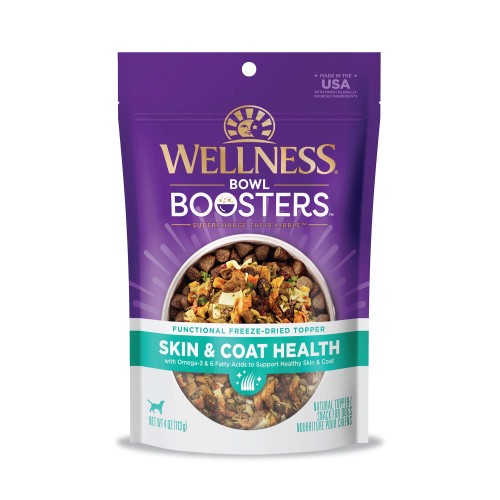February 7, 2024
Unleashing the Secrets to Pearly Whites: A Comprehensive Guide to Dog Teeth Cleaning
Dental health is a critical aspect of overall wellbeing for dogs, playing a pivotal role in their comfort, longevity, and quality of life. Much like humans, dogs are susceptible to dental issues such as plaque buildup, tartar formation, and gum disease. Studies show that 70-80% of dogs have some form of oral disease by the time they are two years old.1 Poor oral hygiene not only leads to discomfort but can also have broader health implications, affecting vital organs like the heart, liver, and kidneys. Neglecting a dog’s dental care can result in painful conditions, difficulty eating, and a decreased appetite. By prioritizing dental health through regular care and preventive measures, pet owners contribute significantly to their canine companions’ overall health, helping them to lead a happy and pain-free life.
The key to good oral health in dogs is to control plaque. Plaque is a sticky film of bacteria that is constantly forming on teeth and forms in as little as six hours after your dog’s dental cleaning. If left uncontrolled, plaque can lead to tartar build up that is difficult to remove. So, a daily cleaning routine is essential to reduce this daily plaque build-up.
A home dental care program, including regular daily teeth brushing, is ideal. Though the tooth brushing routine may seem daunting at first, with a little patience and persistence, most dogs will accept teeth brushing.
Some tips to get started:
- Use Dog-Friendly Toothpaste: Never use human toothpaste, as it can be harmful to dogs. Choose a toothpaste formulated specifically for dogs, with flavors they like such as poultry or beef.
- Choose the Right Toothbrush: You can use a finger brush or a dog toothbrush with soft bristles, or even a washcloth can be used. Ensure the brush is the right size for your dog’s mouth. It is not recommended to use human toothbrushes as the bristles are too stiff and not at the right angle to get the best contact with your dog’s teeth.
- Start Slowly: Introduce your dog to the toothbrush and toothpaste gradually. Let them sniff and lick the toothpaste to get used to the taste. Let them investigate the washcloth, finger brush, or toothbrush, and then gradually introduce it to their mouth. You may need to start with just your finger being able to rub their teeth and gums and then gradually introduce a cleaning dental tool.
- Be Gentle: Use gentle pressure while brushing to avoid causing discomfort to your dog. Pay special attention to the gumline.
- Positive Reinforcement: Praise and reward your dog after each successful brushing session. This positive reinforcement will help them associate tooth brushing with a positive experience.
- Focus on the Outside: Concentrate on brushing the outside surfaces of your dog’s teeth, as this is where plaque and tartar tend to accumulate. Brush in a circular motion.
- Establish a Routine: Make tooth brushing a regular part of your dog’s routine. Start with short sessions and gradually increase the time as your dog becomes more comfortable.
Remember that patience and consistency are key when it comes to brushing your dog’s teeth. Gradually making it a positive experience will contribute to better oral health for your furry friend.
Understanding that not all dogs will accept daily brushing, there are other options for oral health care for dogs. The most fun is dental treats and chews. There are several dental chews and treats on the market that have been clinically proven to help control plaque and/or tartar accumulation.2 The key to finding the right dental chew or treat is to always look for a dental treat that has a Veterinary Oral Health Council (VOHC) Seal of Acceptance. Products that have the VOHC seal on the packaging have gone through clinical testing that demonstrate efficacy of the product. By selecting a product carrying this seal, you’ll know it has been proven to be efficacious. Wellness® WHIMZEES® Brushzees have been awarded this seal of acceptance for both plaque and tartar reduction and have been crafted to support the four areas vets check most – breath, plaque, tartar and gums.
Most dental treats and chews work by mechanical action, or scrubbing on the teeth, so the longer your pet chews on the treat, the better. This chewing will “scrub” the tooth surface, massage the gums, and, even more importantly, release endorphins or feel-good hormones with the chewing action.
One thing to be mindful of when feeding dental treats is the calories they add to the daily diet. You may need to reduce your daily diet or other treats to account for the added calories of the dental chew.
There are also specialized dental diets on the market that have been formulated and produced to promote healthy oral health by reducing plaque and tarter. Again, those should be chosen by only using ones that have the VOHC seal. These diets use a combination of very large kibble sizes, specialized fibers, and tartar-control ingredients to help keep teeth healthy.
Finally, there are a handful of supplements that can be added to water or diet that are beneficial for oral health. These products do not have the mechanical scrubbing action, but rather work via different mechanisms of action to support dental. When choosing a supplement for dental health, it is important to look for the VOHC seal of approval as well.
While using any of the above dental health programs, you will still want to monitor dental health. Keep an eye out for signs of dental issues, such as bad breath, swollen gums, or discolored teeth. If you notice any problems, consult your veterinarian. And while good home dental care can support oral health, dogs will still need professional dental care. Regular professional dental cleanings under anesthesia by a veterinarian are essential for maintaining your dog’s oral health. These cleanings can help address any issues that brushing, treats or diets alone may not prevent.
- Wiggs RB, Lobprise HB. Periodontology. Veterinary Dentistry, Principals and Practice. Philadelphia: Lippincott – Raven, 1997,186-231.
- Quest BW. Oral health benefits of a daily dental chew in dogs. J Vet Dent. 2013;30(s):84-87.





